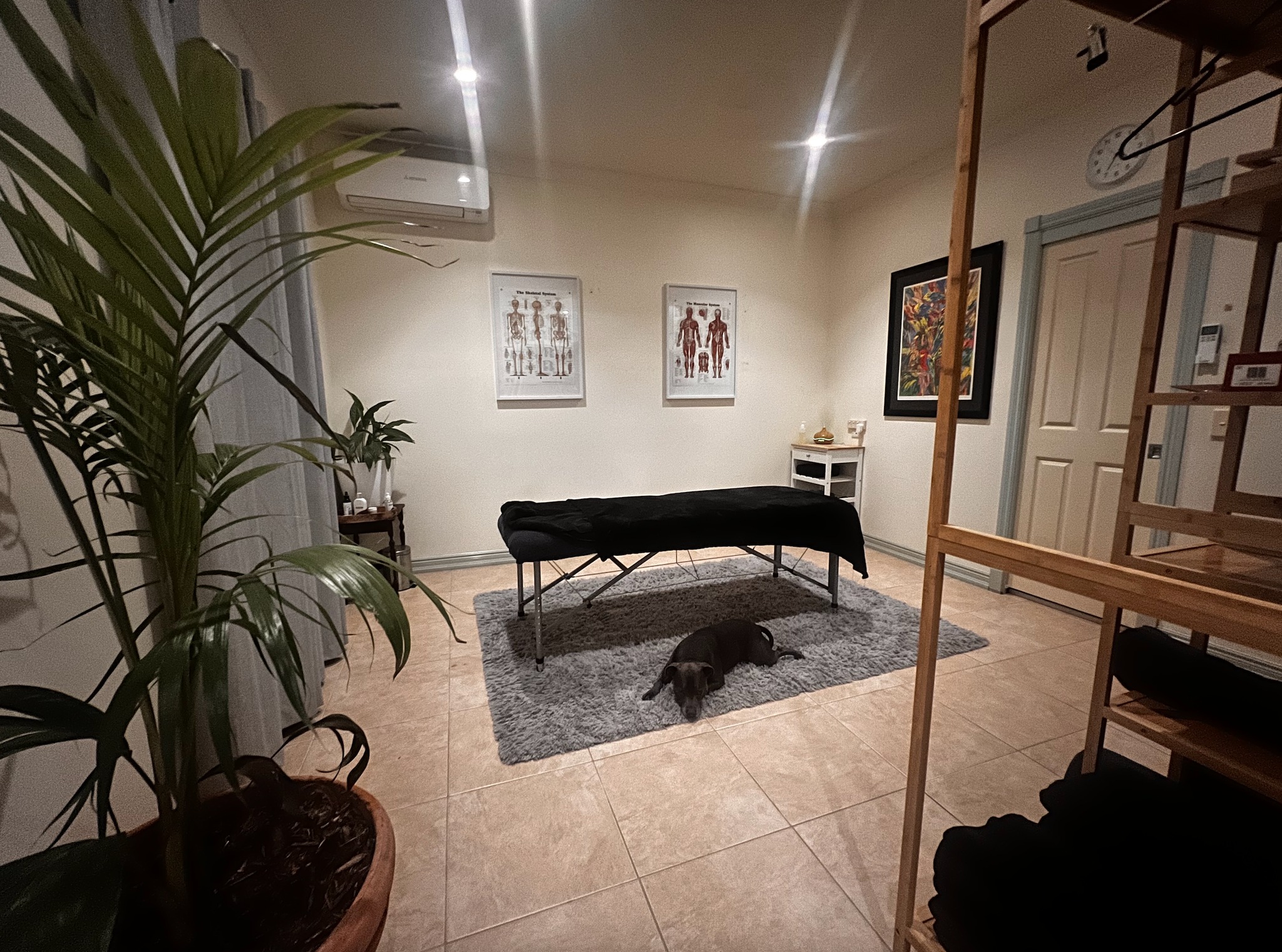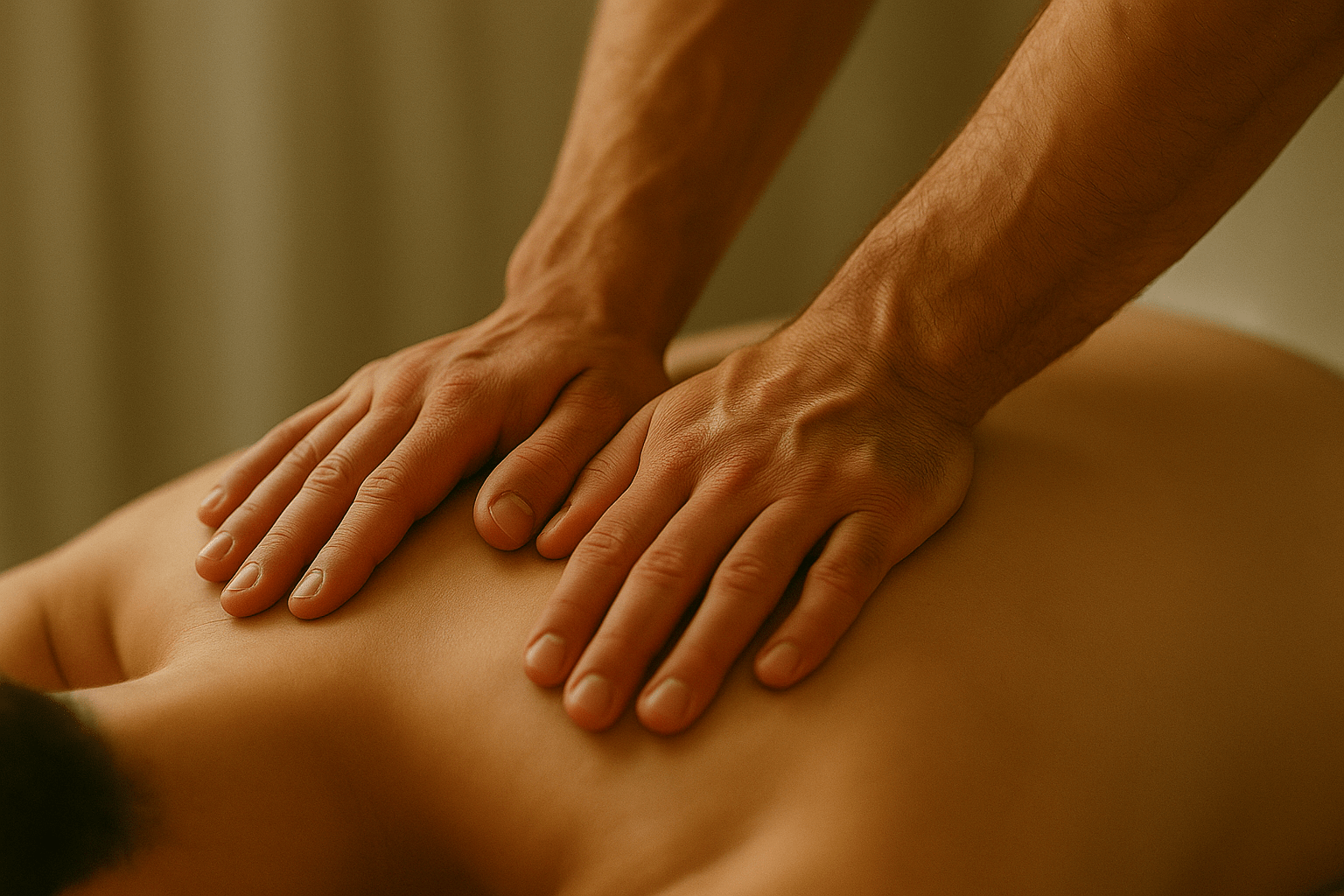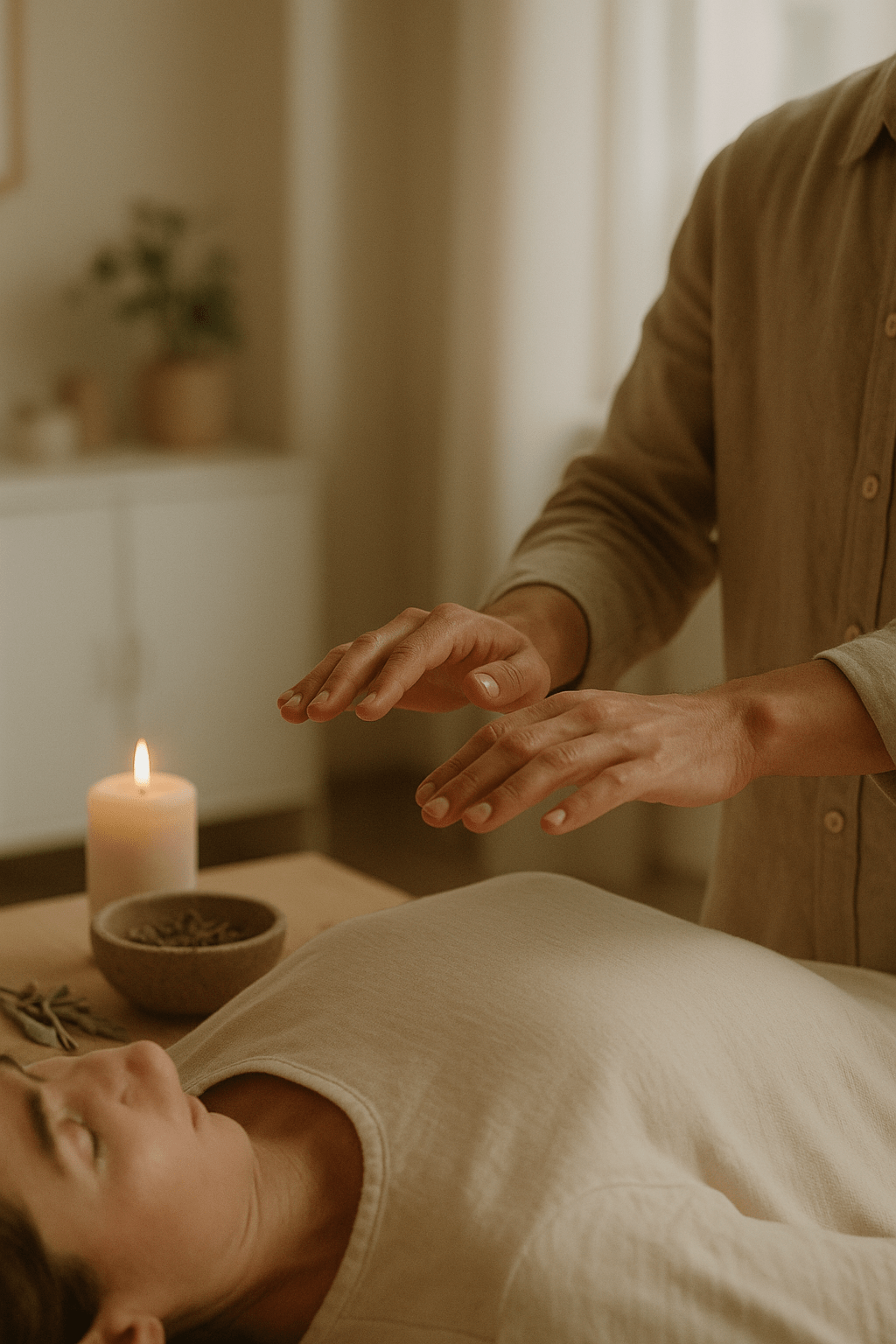What is Manual Therapy?
Manual therapy is hands-on treatment that supports the body in releasing tension, restoring mobility, and returning to natural alignment. It works by influencing muscles, fascia, joints, and the nervous system to create clarity, ease, and optimal movement.
This isn’t a routine massage and it isn’t forced manipulation. It is skilled, responsive touch that meets your body where it is.
Through precise hands-on techniques, guided awareness, and breath, we work with your system — not against it — to unwind restriction, improve posture, and support nervous-system regulation.

Pressure that Listens
The foundation of my work is gentle, intentional, and nervous-system-informed — helping the body soften, reorganise, and release without force.
At times deeper layers may need attention. When appropriate, I may apply firmer pressure or use elbows or forearms to work through stubborn tissue. This is always done slowly, with clear communication, and with pressure adjusted to your comfort.
Deep work should feel relieving and productive — never something your body has to brace against. We honour your thresholds and move at the pace your body can integrate.
Your body already knows how to heal.
My hands help guide the way.

Where Ancient Knowing Meets Modern Science
Manual therapy isn’t new — and it isn’t something I created. Humans have always used touch, presence, and breath to restore comfort, mobility, and nervous-system balance.
Modern research now illuminates what ancient cultures already felt in their bones. Fascia — once viewed as passive connective tissue — is now recognised as a sensory matrix rich in mechanoreceptors and interoceptive fibres, communicating constantly with the brain and guiding movement, tension, and emotional tone. Slow, attuned pressure influences this network,allowing tissues to soften, reorganise, and hydrate, while calming the autonomic nervous system and re-establishing a sense of internal safety.
Yet this is not just science — it is lineage.
Mayan sobadores worked the abdomen to support organ health and emotional release. Ayurvedic practitioners used oil massage and marma points to harmonise body and mind. Traditional Chinese physicians mapped meridians that echo modern fascial pathways. Indigenous cultures across the world used touch, vibration, breath, and intention as medicine.
I don’t claim a new method — I honour a long human tradition, supported by contemporary understanding. In this work, the body is not an object to be corrected; it is a conscious, adaptive system capable of profound self-regulation given the right conditions. My role isn’t to fix, force, or override the body, but to listen, create space, and guide awareness so the system can reorganise from within.
